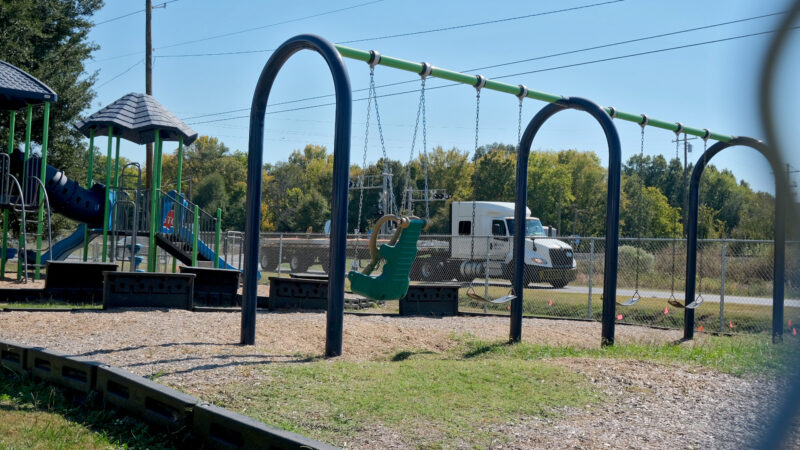LA County response to deadly fires slowed by lack of resources, report says
LOS ANGELES — A lack of resources and outdated policies for sending emergency alerts led to delayed evacuation warnings as flames began consuming neighborhoods during deadly Los Angeles-area wildfires in January, according to an outside review.
The Independent After-Action Report produced by the consulting firm McChrystal Group was commissioned by Los Angeles County supervisors just weeks after the Eaton and Palisades fires killed more than 30 people and destroyed thousands of homes in and around Pacific Palisades and Altadena.
The report released Thursday says a series of weaknesses, including “outdated policies, inconsistent practices and communications vulnerabilities,” hampered the county’s response.
Interviews with survivors and an Associated Press analysis of available data found evacuation orders for some neighborhoods of Altadena where the Eaton Fire swept through came long after houses burned down. AP reporting also showed similar delays for the Palisades Fire, though the Los Angeles Police Department initially handled evacuation management. The report sheds more light on flaws in the county alert system.
Staffing shortages
The report cites critical staffing shortages including a high number of sheriff’s deputy vacancies and an under-resourced Office of Emergency Management. In addition, first responders and incident commanders were unable to consistently share information due to unreliable cellular connectivity, inconsistent field reporting methods, and the use of various unconnected communication platforms.
“While frontline responders acted decisively and, in many cases, heroically, in the face of extraordinary conditions, the events underscored the need for clearer policies, stronger training, integrated tools, and improved public communication,” the report says.
It is not intended to investigate or assess blame, county officials said in a news release.
“This isn’t about pointing fingers. It’s about learning lessons, improving safety, and restoring public trust,” said Supervisor Kathryn Barger, whose district includes Altadena.
The Office of Emergency Management began putting together its staffing plan for predicted heavy winds Jan. 3, four days before the Palisades and Eaton fires ignited. But an experienced staffer had been sent out of town for a training event. That meant several less-knowledgeable staffers were in key positions, according to the report.
They were also working with some new emergency notification software provided by an existing vendor: The county signed the expanded contract with emergency alert company Genasys in November, just before the holidays. Only four staff members were trained on Genasys when the fires hit, according to the report.

The review also found that the process to communicate an evacuation decision to the public was slow, convoluted and involved multiple leadership roles across county-level departments.
In the case of the Palisades Fire, the Los Angeles County Fire Department and Sheriff’s Department identified areas that required evacuation.
They then communicated those areas to a member of the County’s Office of Emergency Management at the Incident Command center. This person then made a phone call or sent a text message to another OEM staffer located in the Emergency Operations Center, who then updated the system put in place by the third-party vendor and triggered an alert to the public.
Alerting the public
During the January inferno, according to the report, this process took between 20 and 30 minutes. That’s an improvement over the old system that took between 30 and 60 minutes for the public to receive notice of an evacuation, the report said.
Still, many of the county’s methods to alert the public require opting in.
Some of the evacuation alerts required residents to click a separate link to get complete information, hindering messaging. The communication system used for alerts did not provide complete information about the fire’s progression. Power outages and cell tower issues further hindered evacuation notices and the fire was moving too fast to keep up, the report found.
Before the fire, the county sent out a handful of warnings about the incoming Santa Ana wind event and amplified National Weather Service messaging on social media and in news releases, but there was no official, stand-alone preparedness messaging provided by the county.
Challenges during evacuations
Some sheriff’s department vehicles were aiding with evacuations in the Palisades area when the Eaton Fire broke out across the county. Those units headed to help evacuate residents in Altadena, along with responders from other agencies including search and rescue teams and staff from a downtown LA jail.
Still, a shortage of vehicles hindered the sheriff’s department response across neighborhoods where the Eaton Fire was burning.
“Vulnerable populations, especially older residents who were not monitoring alerts due to a digital divide and possible mobility challenges, faced increased risks of delayed evacuation,” the authors wrote.
What went right
The authors praised the heroism of first responders including sheriff’s deputies and county firefighters who evacuated senior care facilities, led public transit bus drivers through impacted neighborhoods and rescued people from burning homes.

“This heroic response was driven by urgency and their commitment to save lives, but it also added additional complexity to their responsibilities as they worked to maintain broader operational oversight in the field,” the authors wrote.
The Los Angeles County Board of Supervisors is scheduled to review the 133-page report when it meets next Tuesday.
The causes of the two fires are still under investigation.
After-action reports and investigations revealed issues with alert systems in other California blazes: in the 2017 Tubbs Fire, which killed 22 people in Santa Rosa; the 2018 Camp Fire, which killed 85 people in Paradise; the Woolsley fire, which started the same day and killed three in Malibu; as well as in Colorado’s 2021 Marshall Fire, which destroyed more than 1,000 homes outside Denver; and in Hawaii’s 2023 Lahaina Fire, which decimated that historic town and killed 102.
Alabama Power seeks to delay rate hike for new gas plant amid outcry
The state’s largest utility has proposed delaying the rate increase from its purchase of a $622 million natural gas plant until 2028.
Former U.S. Sen. Doug Jones announces run for Alabama governor
Jones announced his campaign Monday afternoon, hours after filing campaign paperwork with the Secretary of State's Office. His gubernatorial bid could set up a rematch with U.S. Sen. Tommy Tuberville, the Republican who defeated Jones in 2020 and is now running for governor.
Scorching Saturdays: The rising heat threat inside football stadiums
Excessive heat and more frequent medical incidents in Southern college football stadiums could be a warning sign for universities across the country.
The Gulf States Newsroom is hiring an Audio Editor
The Gulf States Newsroom is hiring an Audio Editor to join our award-winning team covering important regional stories across Mississippi, Alabama and Louisiana.
Judge orders new Alabama Senate map after ruling found racial gerrymandering
U.S. District Judge Anna Manasco, appointed by President Donald Trump during his first term, issued the ruling Monday putting a new court-selected map in place for the 2026 and 2030 elections.
Construction on Meta’s largest data center brings 600% crash spike, chaos to rural Louisiana
An investigation from the Gulf States Newsroom found that trucks contracted to work at the Meta facility are causing delays and dangerous roads in Holly Ridge.








